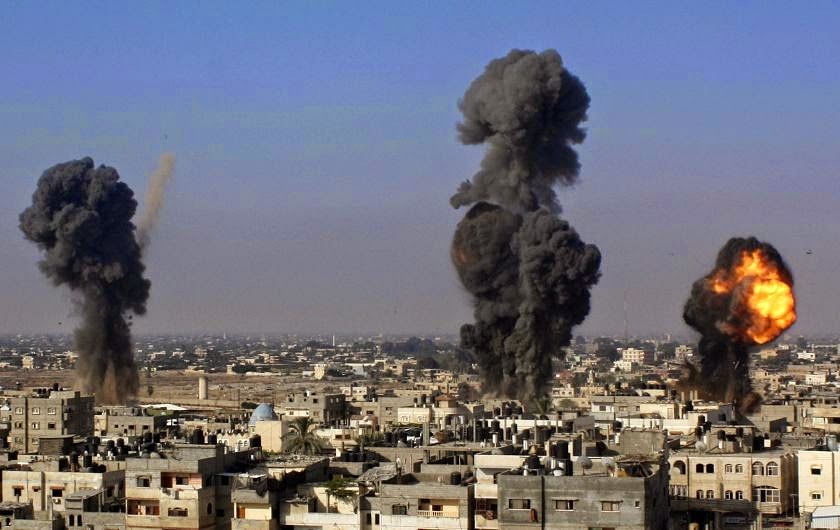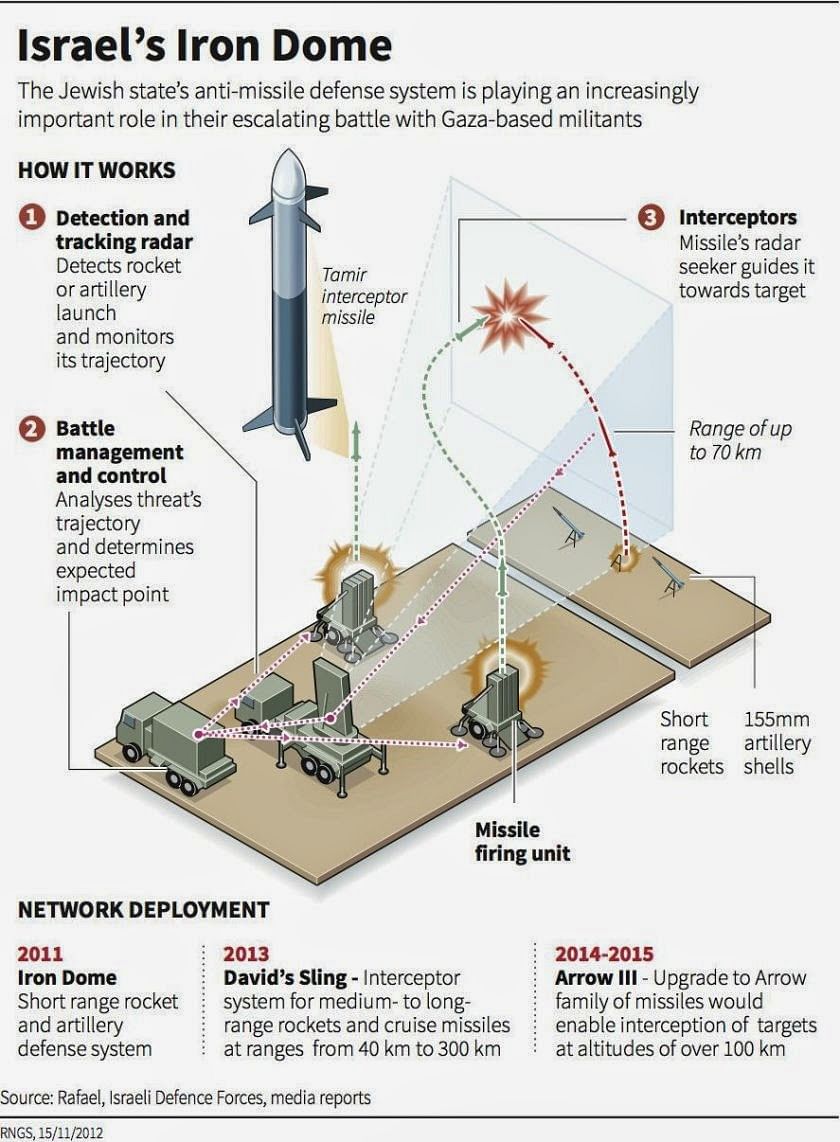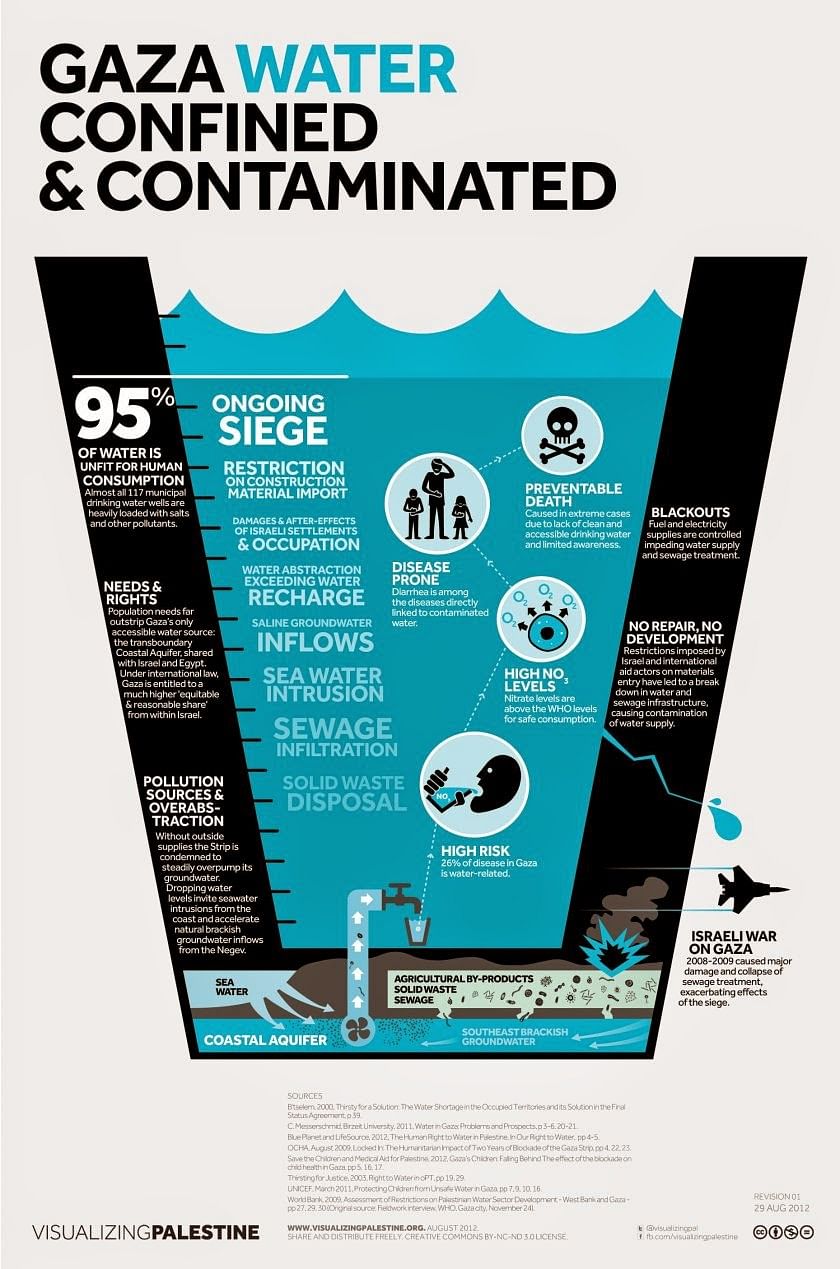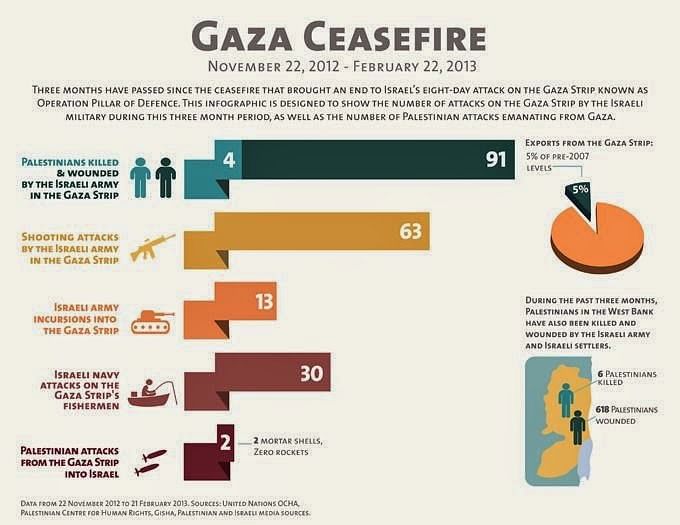9 graphics to understand what life is like in Gaza

News of the latest crisis in Palestine and Israel is rolling into headlines this week, perhaps invoking a dull sense of déjà vu for observers in the World. Once again, targets all over the Gaza Strip are being hammered by air strikes. Again, the barrage of missiles fired from Gaza toward Israel have intensified. Here are nine infographics compiled by www.thinkinghumanity.com will help you gain a better understanding of what life is like for Gazans right now.
1. Gaza's 1.6 million residents are restricted to 141 square miles
Since the beginning of "Operation Defensive Edge" — an escalation that followed weeks of heightened tensions sparked by the abduction and murder of three Israeli teenagers from the West Bank — 1000 Palestinians have been killed (Day 19). Israeli Defense Forces (IDF) officials say that they have targeted 550 terror targets, and that Israel was hit by more than 200 rockets in return.

2. Israel's escalation on Gaza hinges on its sophisticated anti-missile system
In Israel, air raid sirens sounded in Tel Aviv and Jerusalem as the reach of Gaza's rockets extended further than ever before, and Hamas warned that all Israelis were now targets. In response, officials promised a long and intensive operation: "We are killing terrorists of different ranks, and this operation will persist and intensify," Defence Minister Moshe Ya’alon said. "This doesn't have to be a short battle."

3. The Israeli blockade on Gaza means a tight grip on its economy
The story has mostly been told through the face-off between Hamas, the intended target of the air strikes, and the Israeli military. But as the escalation continues to rage on, the real cost of these attacks only becomes more clear, as photos and stories of the air strikes' harrowing aftermath are shared on social media. Take for example the story of the Kaware family, targeted in yesterday's overnight attack.

4. Food insecurity and water shortages are a fact of life in Gaza
Not even a member of Hamas, the home of Odeh Kaware was bombed, even after the protests of neighbors who gathered on the rooftop of the family's home to protect it. Eight were killed, including six children, the youngest of whom was eight-years-old. The IDF has since admitted that the attack was an "error."

5. Gaza's population is mostly under 25

6. Even a “period of calm” in Gaza means serious and sometimes deadly violence
It's that news of rockets and especially Hamas that shapes our impression of daily life in Gaza. But the reality is that even though we might be numb to the news of these exchanges, they disrupt the lives of the 1.7 million people who live under siege in Gaza, who must live their lives normally under the strip's intensely challenging conditions.

7. Israel's military might is many times more powerful than the Palestinians
Footage of an air strike that reportedly hit the northern Gazan home of a man thought to be a high-ranking Hamas official, Ahmed Ghandour, offers a glimpse into how much these attacks disrupt daily life.

8. During Operation Cast Lead in 2008-9, 1,391 Palestinians were killed in Gaza. In Israel, 4 Israelis were killed
For those of us outside of Gaza, it's impossible to grasp what it's like to be there right now. But the tense escalation suggests that the bloodshed of previous strikes may be to come.

9. It's not just in Gaza operations that vastly more Palestinians perish than Israelis
Between December 2008 and January 2009, Israeli strikes in Operation Cast Lead killed 1,391 Gazans — 344 of whom, according to Israeli human rights organization B’Tselem, were children. Just a few years later, in November 2012, 167 Palestinians were killed in an escalation. These victims don't usually have names or faces in the mainstream media, but they were the family members and friends of the people who have to continue leading their lives as usual in the Gaza Strip.

To understand what is really going on in Gaza, it's important to go beyond the headlines, and take a deeper look at the suffering faced by civilians this week.

 For all latest news, follow The Daily Star's Google News channel.
For all latest news, follow The Daily Star's Google News channel. 



Comments